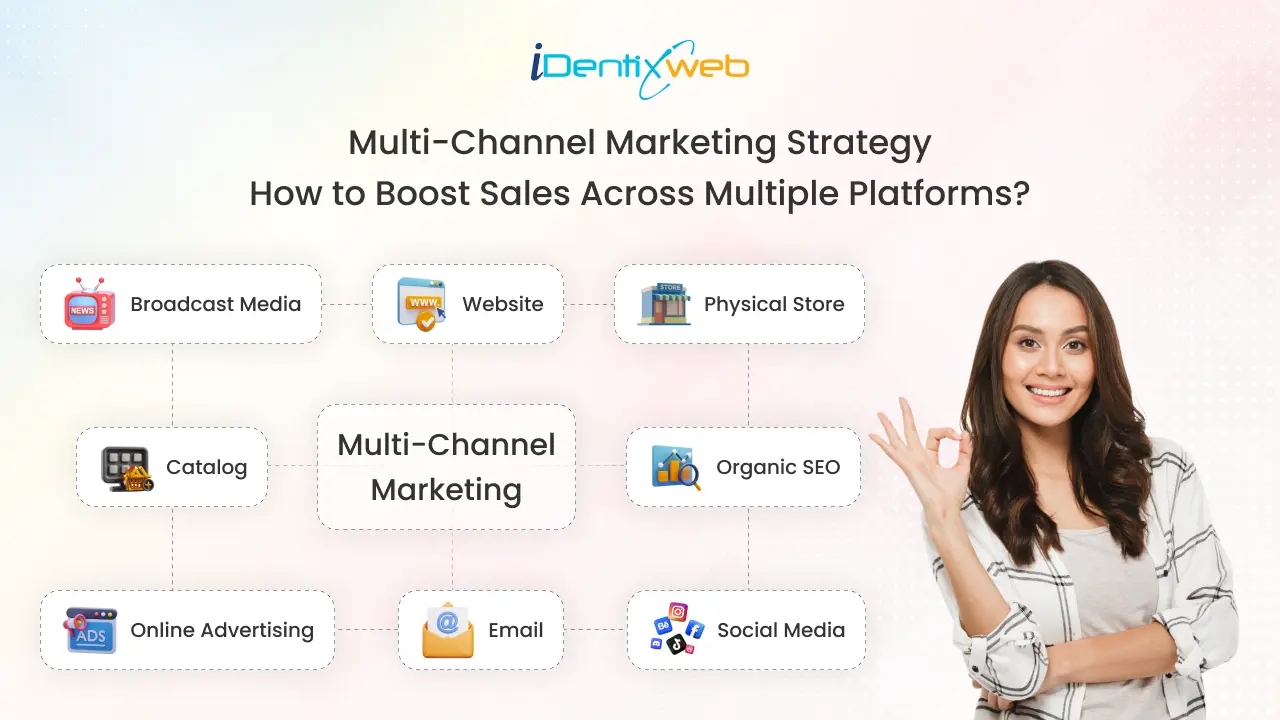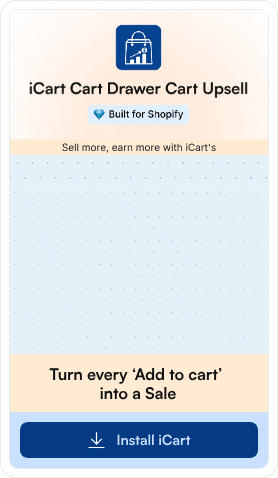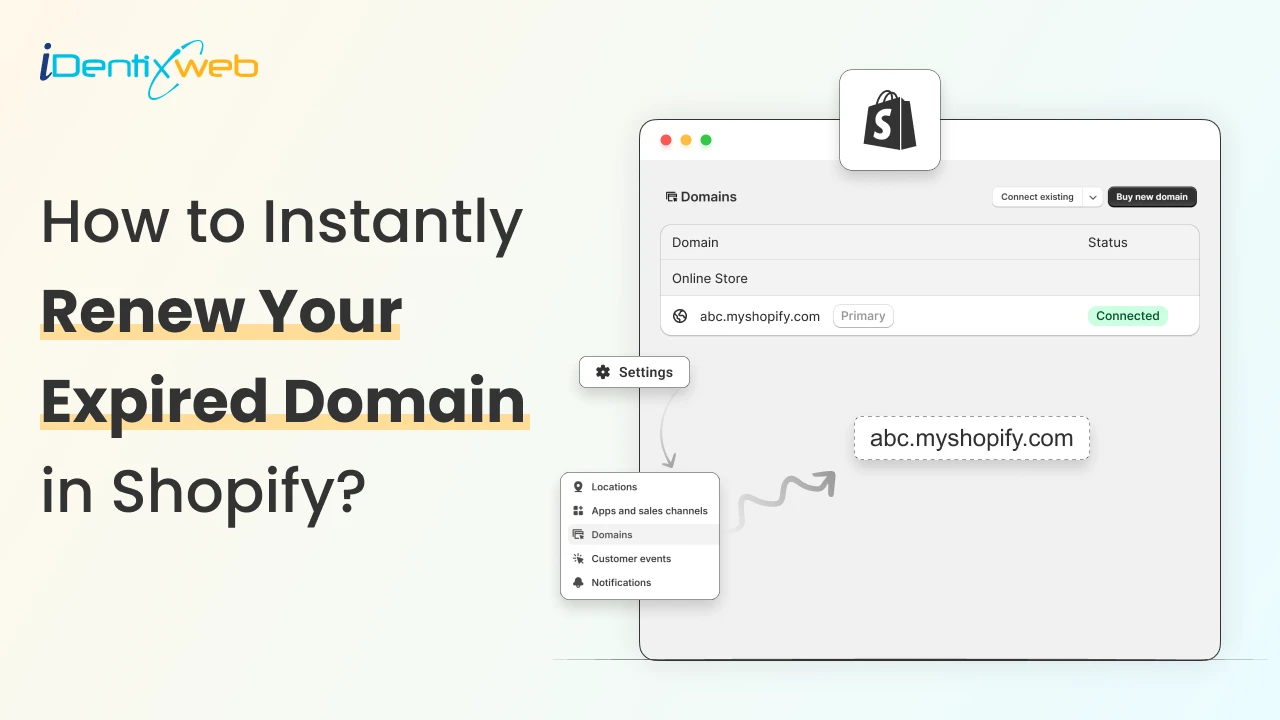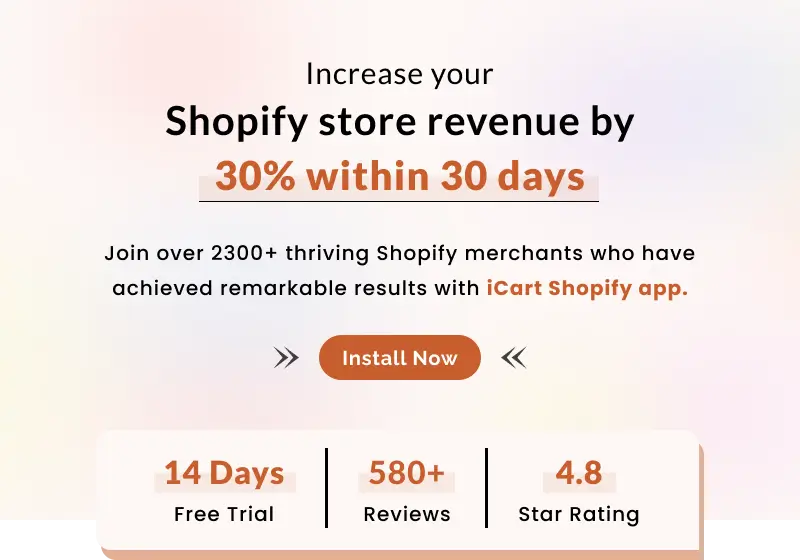
The days of marketing requiring only a website and posting on social media are gone. Businesses now have various alternatives to reach and connect with their audience, including SEO, emails, and paid advertising. That’s where a multi-channel marketing strategy helps.
Today, we will break down this marketing strategy and provide insights to turn your business into a sales-driven company and maximise your impact across all marketing channels.
What is a Multi-Channel Marketing Strategy?
Multi-channel marketing is the strategy of using more than one channel to promote your business. These channels can be digital, such as websites, social media, and emails or traditional, such as newspapers or billboards.
Imagine launching a new ecommerce website to sell digital products. You start by promoting your website's launch on social media.
Once your website launches, you create a landing page to capture traffic through social media ads. You might also run an email marketing campaign to offer discounts to your leads.
This process is a simple example of multi-channel marketing, where you use “multiple channels” to promote your brand. Here are a few types of marketing you can use to promote your business.
| Type | Description | Benefits |
|---|---|---|
| SEO marketing | Optimizing websites to rank higher on search engines. | Cost-effective. Traffic for the long term. |
| Paid marketing | Using paid ads to reach the target audience. | Accurate targeting and immediate results. |
| Email marketing | Sending emails to nurture leads and customers. | Personalization and direct communication. |
| Social media marketing | Promoting your brand through social media platforms. | Customer interaction, branding, and engagement. |
| Print marketing | Using print resources such as billboards, brochures, and more. | Local targeting. |
The multi-channel marketing market size has reached $11.5 billion in 2025. There are plenty of reasons behind this change.
Why are Companies Shifting To Multi-Channel Marketing in 2025?
It’s hard to ignore the benefits that come with implementing a multi-channel strategy. Here are the best ones.
#1 Engaging Customers on Their Preferred Channel
Nowadays, customers interact with multiple channels. You need to stop waiting for them to find your brand and instead find their preferred channel and meet them.
Your customer may want to read a detailed online review before buying your product, or they want a great advertisement on screen to check it out and make the purchase. Multi-channel marketing helps you promote your product in their preferred channel.
#2 Enhanced Customer Experience
Multi-channel marketing gives brands more opportunities to engage customers.
When you create a marketing campaign that combines multiple channels, website, social media and customer service, you unify your brand under a single, consistent message. This leads to a better customer experience.
#3 Sales Boost
A Harvard Business Review study found that over 75% of customers who made purchases engaged in multiple channels. Connecting your brand with multiple channels increases your chances of conversion.
With benefits also come challenges that you need to overcome.
Common Challenges in Multi-channel Marketing Strategies
Just because this strategy boosts your sales doesn't mean it’s easy to implement.
#1 Managing Multiple Touchpoints
Adding multiple touchpoints in your customer engagement journey is never easy. More channels mean more management. You need to put in a lot of time, effort, resources, and money to create multi-channel marketing strategies.
To overcome this, start small and keep adding channels as your brand grows.
#2 Marketing Optimization
It’s always challenging to leverage customer data from multiple channels. With so many types of data coming in, you need to be prepared to analyze and optimize your campaigns to get the best out of your marketing efforts.
Integrate proper marketing tools and AI automation into your marketing workflow to optimize your campaigns.
#3 Maintaining Message Consistency
Creating consistent messaging across multiple platforms is a challenge. Each channel has its own format and tone, requiring tailored content that still aligns with the brand’s core message.
To overcome this challenge, master the multi-channel content marketing strategy. Establish a clear brand voice and messaging guidelines that can be adapted to each platform's specific requirements.
Now that you understand the benefits and challenges of a multi-channel strategy, let’s understand the steps to successfully create it.
How to Build Effective Multi-channel Marketing Strategies?
#1 Analyze Data
Successful multi-channel marketing strategies are data-driven. If you want to integrate all your marketing channels, make sure you take a good look at the data insights of all channels.
If a customer buys your product from a social media ad, you must exclude them from your future email list promoting the same product. If they click and don’t purchase your product, integrate this audience into your retargeting ad campaigns.
#2 Personalize Content
Every marketing channel generates a wealth of data. A strong multi-channel marketing strategy uses personalization to increase customer engagement and drive sales.
Personalization has become essential in modern marketing strategies, from personalized emails and product recommendations to content tailored for different customer bases.
#3 Automate Marketing
AI has become synonymous with marketing in 2025. Invest in good marketing automation tools to streamline your multi-channel marketing efforts. Email marketing, social media scheduling, and content distribution are repetitive tasks that can be automated.
Below are some great marketing automation tool suggestions:
1. Brevo
2. Klaviyo
3. ActiveCampaign
3. Omnisend
#4 Maintain Consistent Messaging
This is important to maintain a brand identity across all marketing channels. Consistent messaging involves aligning your content, tone, and visual elements across all channels.
Customers will start trusting your brand while also maintaining a great customer experience when they switch marketing channels.
#5 Choose the Right Channels
You have multiple marketing channels at your disposal. This doesn't mean you jump into every channel hoping to get customers. Conduct proper market research based on your business and where your customers are. They could be on social media or in brick-and-mortar stores. Add the right channels to your multi-channel marketing strategy. To support your research, use a proxy scraper to gather competitive insights and audience behavior data across different platforms without running into access restrictions.
Opt for a Unified Approach with Multi-channel Marketing
At the end of the day, it doesn’t matter the number of channels you use for marketing. A successful multi-channel marketing strategy involves understanding your audience and delivering the right message at the right time.
Once you understand the needs of your target audience and the channels they use, the rest becomes easier.
FAQs
1. What is a multi-channel marketing strategy?
A multi-channel marketing strategy involves using multiple channels (Website, social media, email, print media) for your brand’s sales and marketing efforts.
2. How to measure multi-channel marketing?
Identify your KPIs first, before measuring multi-channel marketing performance. It could be click-through rate, sales, conversion rate, or average order value. Use marketing tools like Google Analytics, SEMrush, Mailchimp, and Hubspot to get performance reports.
3. Why is multi-channel marketing important?
Nowadays, customers are engaged on multiple platforms. You need to be where your customers are. A multi-channel marketing strategy gives you a unified approach to market your brand on multiple platforms.
4. What are some multi-channel marketing strategy examples?
An ecommerce company selling digital products sets up a social media ad. Someone clicks on the ad and adds the product to their cart but doesn't check out. The company automatically emails the customer to complete the checkout process. The customer confirms the order.
5. What is the difference between omni and multi-channel marketing?
The main difference between omnichannel and multi-channel marketing is that the former focuses on customer experience across all channels, while the latter focuses on customer engagement across select channels.







About the author
Vineet Nair
Vineet is an experienced content strategist with expertise in the ecommerce domain and a keen interest in Shopify. He aims to help Shopify merchants thrive in this competitive environment with technical solutions and thoughtfully structured content.